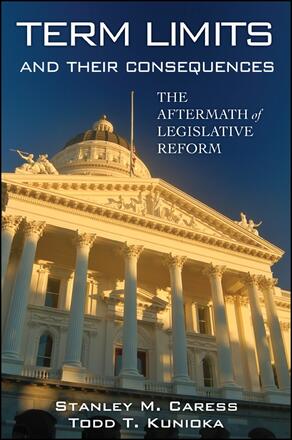
Term Limits and Their Consequences
The Aftermath of Legislative Reform
Alternative formats available from:
Comprehensive examination of legislative term limits and how they have changed the American political system.
Description
Legislative term limits remain a controversial feature of the American political landscape. Term Limits and Their Consequences provides a clear, comprehensive, and nonpartisan look at all aspects of this contentious subject. Stanley M. Caress and Todd T. Kunioka trace the emergence of the grassroots movement that supported term limits and explain why the idea of term limits became popular with voters. At the same time, they put term limits into a broader historical context, illustrating how they are one of many examples of the public's desire to reform government. Utilizing an impressive blend of quantitative data and interviews, Caress and Kunioka thoughtfully discuss the impact of term limits, focusing in particular on the nation's largest state, California. They scrutinize voting data to determine if term limits have altered election outcomes or the electoral chances of women and minority candidates, and reveal how restricting a legislator's time in office has changed political careers and ambitions. Designed to transform American politics, term limits did indeed bring change, but in ways ranging far beyond those anticipated by both their advocates and detractors.
Stanley M. Caress is Professor of Political Science at the University of West Georgia and the author of Dynamics of American Politics. Todd T. Kunioka is a statistical analyst for Los Angeles County and teaches Political Science at Cerritos College in California.
Reviews
"After moving through its clear prose and straightforward tables, the reader will emerge with firm sense of the impact of term limits on who serves in statehouses, how their careers unfold, and patterns in the tenure of leaders … Caress and Kunioka's work will become a standard reference on these weighty matters." — American Review of Politics
"Caress and Kunioka have written a very timely and comprehensive study regarding the impact that term limits have had on state legislatures … The authors have provided an excellent contribution by covering every angle thoroughly … in a way that is easily understood … Highly recommended." — CHOICE
"While prior studies were based on limited or no data, this book examines states with lengthy term limits experience. More of this type of work is needed to capture the consequences of term limits." — Rick Farmer, Assistant Commissioner, Oklahoma Insurance Department